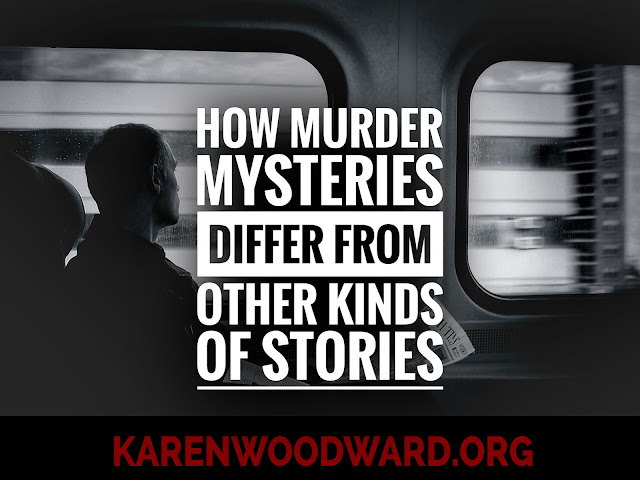I've already discussed conflict and the importance of having goals, but a goal is useless without stakes.
Stakes are the possible consequences of a course of action. What will happen if the protagonist achieves her goal? What will happen if she doesn't?
Stakes generate tension. Conflict. They create suspense.
For example, let's say we have a character, Bob. Bob is on a diet, he wants to lose 20 pounds before his brother's wedding. Here are two possible versions of the story:
a. Bob lost 20 pounds in time for his brother's wedding.
b. Bob failed to lose 20 pounds.
Either way: So what? Why should we care?
How about this:
c. Bob makes a bet with his brother that if he can't fit into his tux in time for the wedding he'll pay for the wedding. But paying for the wedding would wipe out Bob's savings and he wouldn't be able to take his girlfriend on the dream vacation he has been promising her for the past four years. If Bob doesn't make good on his promise, his girlfriend will leave him. He knows he was an idiot to make the bet but what's done is done. He can't welsh. Will Bob be able to lose the 20 pounds before the wedding or will he fail, pay for his brother's wedding and die alone?
That's better. It's still not a terribly interesting story, but there's potential. As soon as Bob has something to lose and something to gain, we can begin to care about what happens to him.
The possible consequences of a course of action must be clear.
In order for the stakes to be clear, the goal must be clear.
A protagonist wants something. She can want more than one thing, but she must want one thing desperately and more than anything else. The thing that is desperately, passionately, wanted becomes the story goal. If the protagonist achieves the goal then she's succeeded, if not then she's failed.
For instance, in Indiana Jones and Raiders of the Lost Ark, if Indiana finds the ark and brings it back with him then he has succeeded. If not, he's failed.
What are the stakes? If Indy achieves his goal then he gets professional kudos and the opportunity to study a fascinating artifact. If he doesn't, then the Nazi war machine will use the ark to help turn the tide of war in their favor.
Of course, the goal can change along the way. In The Firm Mitch McDeere starts out wanting to be a rich lawyer then, about halfway through the story, his goal changes: he just wants to be free, he doesn't want either the FBI or the mob to own him.
The stakes must matter to the characters
If the stakes don't matter to the characters that's like creating a beautiful car but neglecting to put any gas in the engine. If the stakes don't matter to the characters there's nothing to drive the story. After all, if your characters don't care about achieving the goal, why would readers?
The other day I was walking through a fairground and one of the hawkers called out to me. "Hey! You want to play this game? I know you do. It's fun and you could win a great prize."
"Oh?" I said. "What prize?"
The boy-man held up a big stuffed pink and green elephant.
No thanks. It would be cheaper--a lot cheaper--for me to just go out and buy myself a stuffed animal. Though if he'd held up the promise of a critique by, say, Stephen King I'd have played. Heck, he wouldn't have been able to get rid of me!
This point, about the stakes needing to matter to your characters, is also about believability. When the going gets tough and your character is getting beaten up, whether literally or figuratively, they need a strong--in other words believable--reason for why they keep on keeping on.
The stakes must tie into your characters' wants and fears.
How do you, as a storyteller, make it plausible that your characters will go through hell to achieve their goal? We've just seen how. You make the stakes matter to the characters. How do you do that? You tie the stakes into your characters wants and fears.
I think this is one reason why stakes are often life and death. Whether or not a person continues living matters a great deal and it doesn't need explanation. If a burglar pulls out a gun and points it at your character as they're taking a shortcut through a dark alley, the reader understands their panic.
A character's wants and fears should be unique. So should the stakes.
What does the character want? What drives him? What gets him up in the morning? If he won an obscene amount of money what would he do with it?
What does the character fear? When he was a kid what kind of beasties lived under his bed? Everyone fears hunger, pain and death, give your character unique fears. One of the things I loved about
Mr. Monk was that he was scared of milk.
Milk! Who is scared of milk? Monk, that's who. That says something about a character.
A character's wants should reveal something unique about him.
Why a character's wants and fears are important.
Why, from a storytelling perspective, do a character's wants and fears matter? I've heard different answers to this question. Some say they matter because they tie characters to their goals, other say they matter because they tie characters to the story. And those answers are, I think, good answers. They're both correct.
But I would also say that the stakes tie the reader to the characters and, in so doing, to the story.
For example, in William Goldman's incomparable story, The Princess Bride, why did Inigo Montoya devote his life to becoming a master swordsman? It was because the six-fingered man (Count Rugen) killed his father and Inigo had sworn to avenge his father's death. So yes, sure, Inigo's goal was to kill Rugen but I would argue that generally, he wanted to do right by his father. The love that Inigo had for his father was the glue that kept him focused on his goal.
What are the stakes for Inigo? When Inigo finally fights Count Rugen it seems as though Inigo is dying, felled by a sneaky, dishonorable, blow meted out by Rugen. We understand from the very beginning: the stakes of this contest, this battle, are life and death and Rugen isn't going to fight fair.
All that is true, but I would argue that for Inigo the stakes that matter to him aren't life and death--his life and death--they are whether he succeeds in avenging his father. If he were to discover that avenging his father would mean his death he wouldn't hesitate. If Inigo doesn't succeed in avenging his father's death, it seems to me that Inigo wouldn't want to live. Inigo doesn't count his life as precious, he lives with one goal in mind: avenge his father's death.
Does the reader/viewer see it that way as well? I don't think so. I think we care much more than Inigo does about his life. Yes, absolutely, we want to see justice done. We want to watch Inigo complete his quest and kill the dishonorable Count Rugen. But it is also very important to us--much more important than it is to Inigo himself--that he survive.
So all that has been building up to this: the stakes of the character aren't necessarily our stakes. We don't necessarily care about the same things the character cares about.
When, at the end of the story, the stakes of the battle between Inigo and Count Rugen come down to life and death, I care more about Inigo's life than he does.
Stakes: Internal and External
Just as characters have internal and external goals so there are internal and external stakes.
For instance, in the movie Shrek the protagonist's internal conflict, his challenge, was to risk rejection and let people in, to let others know how he really felt (for example, to tell Princess Fiona he loved her). Shrek needed to risk rejection so he could make connections with others and find true love.
Shrek's outer challenge was to rescue Princess Fiona so Lord Farquaad would remove the fairytale creatures from his swamp.
Different kinds of stakes accompany different kinds of goals. If Shrek failed to rescue Princess Fiona from the castle, Lord Farquaad would have had Shrek killed. If Shrek failed to lower his defences and let people in, he would have lost the love of Princess Fiona and endured a sad and lonely existence in his now vacant swamp. A pyrrhic victory.
It's not size, it's complexity
It's not the size of the stakes that count, it's their complexity. Complex stakes involve not just a character's internal or external goals, but both together. It's not just about saving the world, it's about overcoming one's fears to save the world.
Escalate the stakes
Stories contain complications. The hero sets out to do one thing, a complication pops up and blocks him, he tries to get around the complication by doing something but that only makes things worse, and so on.
As I discussed in the chapter on Try-Fail Cycles, the stakes escalate throughout the story until everything comes to a fever pitch at the end.
Conflicting goals mean conflicting stakes
For instance, in Indiana Jones and Raiders of the Lost Ark, there's a terrific scene in the middle where Indy ducks into a tent to hide from the bad guys and comes across Marion tied to a tent pole. Indy begins to untie Marion then realizes that if the Nazis discover Marion missing they'll know he is in the camp looking for the ark. He can't give himself away.
What does Indy do? He ties Marion back up! She is furious with him. It's a great scene.
Lets take a look at the stakes at play in this scene. At the beginning of the scene Indy is trying to hide from a guard so he ducks inside a tent.
Indiana's stakes:
Goal: Escape the guard's notice and obtain the ark.
Success: Indiana doesn't get captured and is one step closer to his goal.
Failure: Indiana is captured, possibly tortured. He fails to obtain the ark and the world is taken over by the Nazis.
Marion's stakes:
Goal: Get untied, sneak out of the Nazi camp, go to America.
Success: Marion gets her freedom.
Failure: Marion's future is unknown. She could be tortured, various nasty things could happen to her.
In the middle of the scene the stakes change when Indy realizes he has to tie Marion back up or risk losing the ark.
Indy's Goal: To NOT completely alienate the affections of Miriam.
Success: Marion's love and gratitude.
Failure: Her lasting wrath.
For Indy to succeed in winning Marion's affection--or just to avoid making her furious with him--he must help her escape. But he can't. If he helps her, then he risks his primary mission. So he fails to achieve this minor goal, accepts Marion's wrath, ties her back up, and exits the tent.
The point is that conflicting mini-goals with their own stakes often pop up within a scene. The scene between Indiana and Marion was especially interesting, I thought, because it highlighted their diametrically opposed interests. Marion would much rather just escape and forget all about the ark, but not Indy.
* * *
As we've seen, characters have goals. Depending upon whether they attain these goals different things come about. Good things will happen if they attain the goals, bad things if they don't. This--the space between where the character is and where the character could be; the possible future that awaits them--creates conflict and conflict is the engine that moves a story forward. Simple as that.








